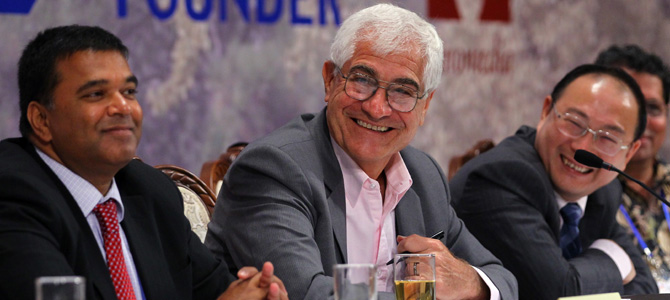
From no other channel can the huge demand for electricity from aluminum production be satisfied more easily than connecting it directly with a large power station.
In that way, China Power Investment was able to stop its losses and see a turnaround instead.
"Electrolytic aluminum has become our new profit center, although it's not a traditional business of a power plant," Lu said.
In eastern Inner Mongolia, where China Power Investment keeps intense operation, there are large coal deposits. But most of the coal is lignite, low in its release of heat and hard for transportation and storage, Lu said.
Combining coal mining, electricity generation and aluminum production has raised the company's energy efficiency far higher than the industry average.
In 2011, electrolytic aluminum brought in 2 billion yuan profit for the company, while its thermal-power business saw a loss of more than 10 billion yuan.
At the same time, China Huadian Corp, also one of China's top five power generators, is building its advantage through new international collaborations.
Last year, China Huadian entered a joint venture with General Electric Co. to develop an aeroderivative gas turbine, a core device in distributed energy systems. Named Huadian GE Aero Gas Turbine Equipment Co, the venture has China Huadian contributing 51 percent of its registered capital of $100 million, and is scheduled to start operating in 2013 in Shanghai.
Distributed energy systems, also known as distributed energy resources, refer to the generation of energy from small energy sources. "It is the first step for us to introduce key distributed energy resources technology from the US," said Deng Jianling, a China Huadian vice-president.
The aeroderivative gas turbine is modified from the aviation engine and burns natural gas to create energy, capable of maintaining a high level of energy efficiency.
China Huadian has been developing distributed energy resources projects that help provide electricity for consumers from the company's nearby small power plants, thereby reducing energy waste during transmission.
It plans to establish 10 million kilowatt distributed energy resource projects by the end of 2020.
According to the National Energy Administration, by the end of 2020, the installed capacity of distributed-energy resources-based natural-gas generators is expected to reach 50 gigawatts, a tenfold increase from 2011.
Currently, China's largest distributed energy resources station is in Guangzhou University Town, operated by China Huadian, which enjoys millions of yuan in profit each year from an equivalent reduction of 100,000 tons of emission from a coal-fueled thermal power plant.
A report released by the World Bank earlier this year warned that China's economic growth will diminish over the next few decades unless China rethinks the dominance of government and State-owned assets in managing the economy.
In the soft-power race among emerging economies, China ranks No 1, benefiting from distinguished global image, integration and integrity, according to the 2012 rapid-growth markets soft-power index report of the consulting firm Ernst & Young, which was released in May.
The strength of China's soft power within the emerging world is primarily driven by the growth of its multinational corporations, increased tourism and the rapid expansion and ranking of its universities, Ernst & Young said.
baochang@chinadaily.com.cn


 Washington to remain focused on Asia-Pacific
Washington to remain focused on Asia-Pacific RQFII target blue chips amid bear market
RQFII target blue chips amid bear market Australian recall for top two exporters
Australian recall for top two exporters China fears new car restrictions
China fears new car restrictions